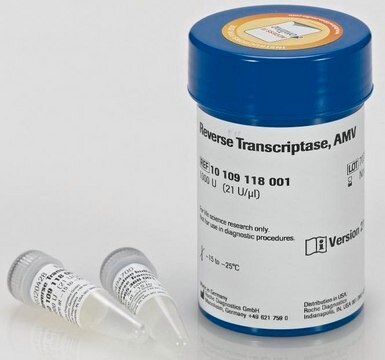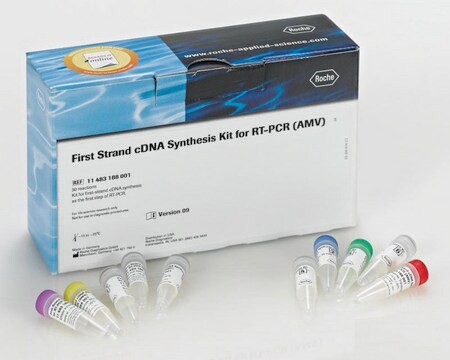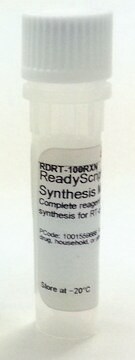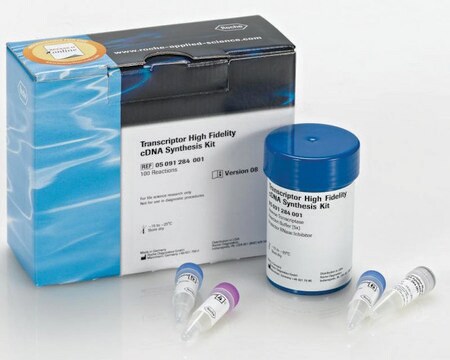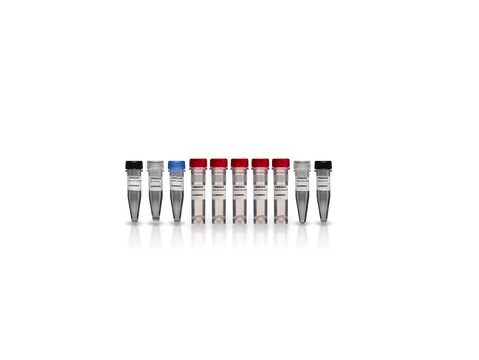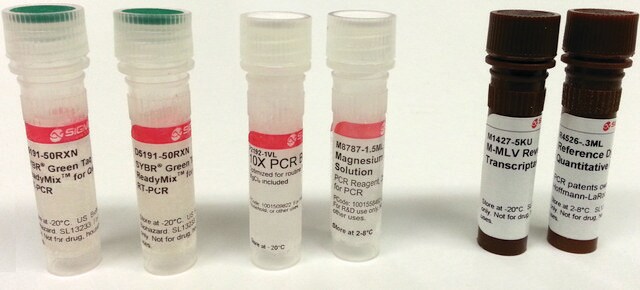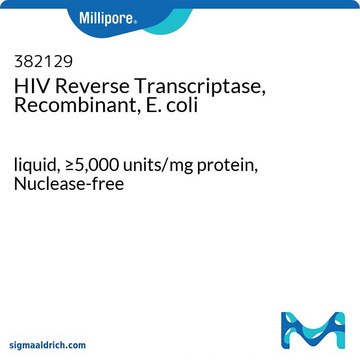M1302
M-MLV Reverse Transcriptase
Moloney Murine Leukemia Virus enzyme & buffer for cDNA synthesis
Synonym(s):
Moloney Murine Leukemia Virus Reverse Transcriptase
About This Item
Recommended Products
biological source
Porcine intestinal mucosa
Quality Level
recombinant
expressed in E. coli
form
liquid
usage
sufficient for 200 reactions
sufficient for 250 reactions
feature
dNTPs included: no
hotstart: no
concentration
200 units/μL
technique(s)
RT-PCR: suitable
color
colorless
input
purified RNA
shipped in
wet ice
storage temp.
−20°C
General description
Application
- for the preparation of cDNA libraries or for first strand cDNA synthesis
- for use in a 2-step RT-PCR assay
- in quantitative realtime-polymerase chain reaction (RT-qPCR)
- in reverse transcription
Features and Benefits
- Thermostable reverse transcriptase active at 37 °C.
- Can be used to generate first strand cDNA of up to 7 kb.
Packaging
Unit Definition
Preparation Note
Legal Information
inhibitor
Signal Word
Danger
Hazard Statements
Precautionary Statements
Hazard Classifications
Resp. Sens. 1
Storage Class Code
12 - Non Combustible Liquids
WGK
WGK 3
Flash Point(F)
Not applicable
Flash Point(C)
Not applicable
Personal Protective Equipment
Certificates of Analysis (COA)
Search for Certificates of Analysis (COA) by entering the products Lot/Batch Number. Lot and Batch Numbers can be found on a product’s label following the words ‘Lot’ or ‘Batch’.
Already Own This Product?
Find documentation for the products that you have recently purchased in the Document Library.
Customers Also Viewed
Articles
The introduction of small interfering RNAs (siRNAs) into cultured cells provides a fast and efficient means of knocking down gene expression and has allowed siRNAs to quickly become a ubiquitous tool in molecular biology.
Introduction of small interfering RNAs (siRNAs) into cultured cells provides a fast and efficient means of knocking down gene expression and has allowed siRNAs to quickly become a ubiquitous tool in molecular biology.
Related Content
RT-qPCR, or quantitative reverse transcription PCR, combines the effects of reverse transcription and quantitative PCR or real-time PCR to amplify and detect specific targets. RT-qPCR has a variety of applications including quantifying gene expression levels, validating RNA interference (RNAi), and detecting pathogens such as viruses.
Our team of scientists has experience in all areas of research including Life Science, Material Science, Chemical Synthesis, Chromatography, Analytical and many others.
Contact Technical Service